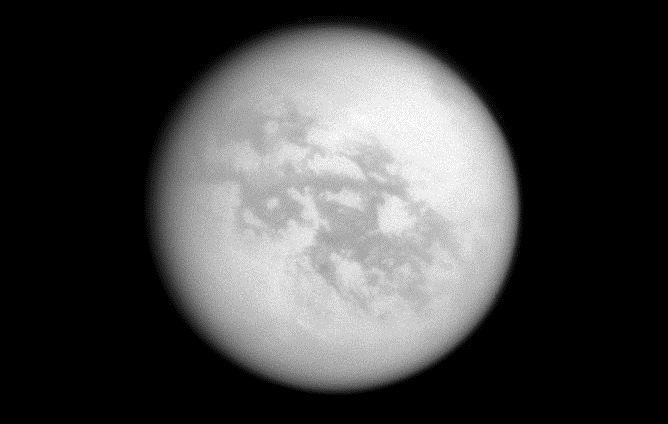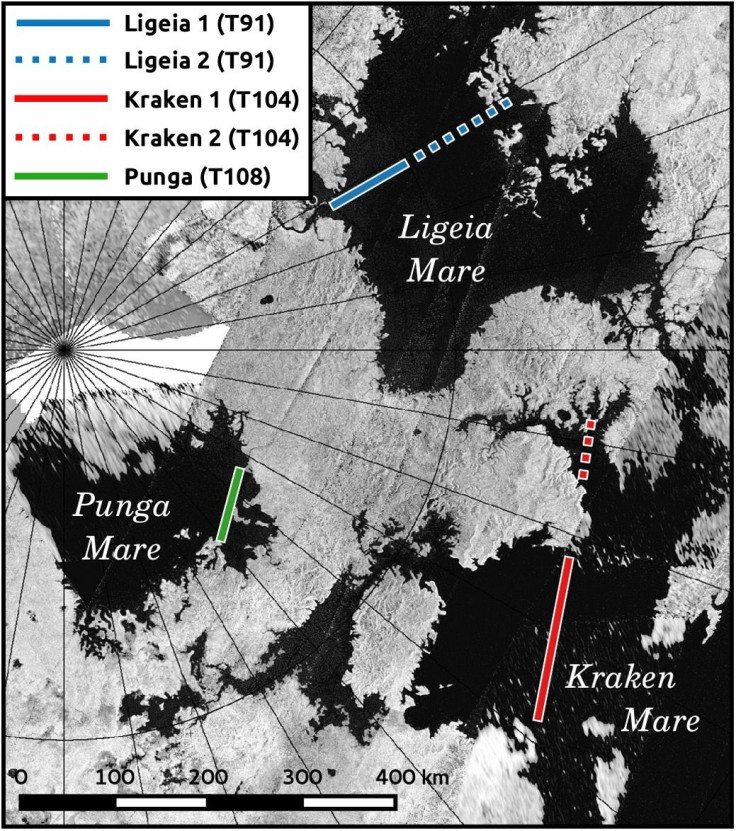Aliens On Titan: Landing A Spacecraft On Moon's Lakes Will Be Easy

Titan’s lakes are pretty calm, so a spacecraft might have an easy time landing on the Saturn moon as it searches for alien life.
Scientists analyzed radar data taken from the icy moon in the outer solar system to determine how choppy the seas are, finding that the biggest waves only get about 1 centimeter high and 20 centimeters long. From that information, scientists can better understand something they cannot directly study on that world: wind.
The data used for their study, published in the journal Earth and Planetary Science Letters, was taken during the early summer season at the three biggest lakes on Titan: Ligeia Mare, Kraken Mare and Punga Mare. Those three lakes are not made from water, but rather are composed of liquid hydrocarbon.
Read: Titan Has a Lot of Static Electricity
“There’s a lot of interest in one day sending probes to the lakes, and when that’s done, you want to have a safe landing, and you don’t want a lot of wind,” lead author Cyril Grima said in a statement from the University of Texas at Austin. “Our study shows that because the waves aren’t very high, the winds are likely low.”
Previous research has suggested that early summer is the start of the windy season on Titan, but these new findings could change that idea because high winds would probably translate to bigger waves than the ones observed.
And it’s not that there isn’t wind on the planet — experts have investigated how sand particles on Titan stick together and suggest that because of their light weight and low density, the way the wind makes them rub together creates so much static electricity that they clump firmly together, making it difficult for the wind to then blow them apart.

“From the results, it looks like we are right near the threshold for wave generation, where patches of the sea are smooth and patches are rough,” co-author and Cornell University astronomy professor Alex Hayes said in the UT statement.
To understand the sizes of these lakes on Titan, the methane lake Kraken Mare could be bigger than the Caspian Sea, an oblong body of water in western Asia that is bounded by Russia, Kazakhstan, Turkmenistan, Iran and Azerbaijan.
Information about the environment on Titan’s surface would be crucial for a future mission to the moon, manned or unmanned. It holds scientists’ interests because liquid is believed to flow on its surface in a similar way to how it does on Earth, with the hydrocarbons methane and ethane falling like rain and filling up its lakes.
However, recent analysis has questioned whether that flow is more like what you would have found on Mars before that planet transformed into the dry landscape we know today — as Earth has tectonic plate activity that puts things in flux whereas Mars and the Titan moon do not.
Read: Is There Life on Enceladus? Another One of Saturn's Moons Holds Interest Too
Regardless of the way the liquid flows, Titan has other conditions that make it a possible candidate for a world outside of our planet that harbors life.
“The atmosphere of Titan is very complex, and it does synthesize complex organic molecules — the bricks of life,” Grima said. “It may act as a laboratory of sorts, where you can see how basic molecules can be transformed into more complex molecules that could eventually lead to life.”
A spacecraft sent to Titan would likely be geared toward learning more about its surface and its atmosphere as well as investigating potential ice volcanoes and an underground water ocean.
© Copyright IBTimes 2024. All rights reserved.





















